Related Research Articles

Lewis Wallace was an American lawyer, Union general in the American Civil War, governor of New Mexico Territory, politician, diplomat, artist, and author from Indiana. Among his novels and biographies, Wallace is best known for his historical adventure story, Ben-Hur: A Tale of the Christ (1880), a bestselling novel that has been called "the most influential Christian book of the nineteenth century."
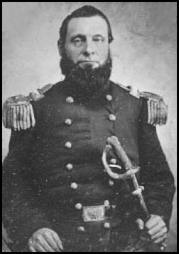
Abel Delos Streight was a peacetime lumber merchant and publisher, and was commissioned a United States Army / Union Army colonel in the American Civil War (1861-1865). His command precipitated a notable cavalry raid in April–May 1863, known as Streight's Raid into northern Alabama. He was a prisoner of war for 10 months following his surrender in the Confederate States capital of Richmond, Virginia. On March 12, 1866, his nomination for appointment to the grade of brevet brigadier general, to rank dating from March 13, 1865 was confirmed. He later became a politician, and served as a state senator in the Indiana Senate back home in the state capital of Indianapolis, Indiana for two terms.

Graham Newell Fitch was a United States representative and senator from Indiana, as well as a brigade commander in the Union Army during the American Civil War.

John Thomas Wilder was an officer in the Union Army during the American Civil War, noted principally for capturing the critical mountain pass of Hoover's Gap during the Tullahoma Campaign in Central Tennessee in June 1863. Wilder had personally ensured that his "Lightning Brigade" of mounted infantry was equipped with the new Spencer repeating rifle. However, Wilder initially had to appeal to his men to pay for these weapons themselves before the government agreed to carry the cost. The victory at Hoover's Gap was attributed largely to Wilder's persistence in procuring the new rifles, which disoriented the enemy.

Nathan Kimball was a physician, politician, postmaster, and military officer, serving as a general in the Union army during the American Civil War. He was the first statewide commander of the Grand Army of the Republic veterans organization in Indiana.

The Battle of Rowlett's Station was a land battle in the American Civil War, fought at the railroad whistle-stop of Rowlett's in Hart County, Kentucky, on December 17, 1861. The outcome was inconclusive, although the Union Army continued to hold its objective, a railroad bridge across the Green River.

The 28th United States Colored Infantry, also called the 28th Indiana Infantry (Colored),1 was an African American infantry regiment from the state of Indiana that fought in the American Civil War.
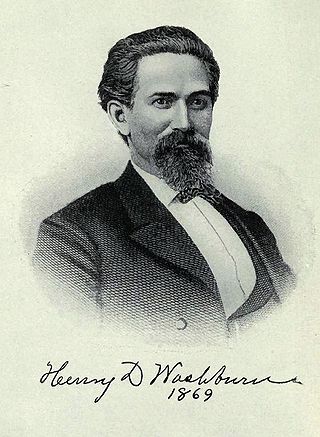
Henry Dana Washburn was a U.S. Representative from Indiana and a colonel and was breveted twice as brigadier general and major general in the Union Army during the American Civil War.

Milo Smith Hascall was an American soldier, banker, and real estate executive who served as a general in the Union Army during the American Civil War.

Indiana, a state in the Midwest, played an important role in supporting the Union during the American Civil War. Despite anti-war activity within the state, and southern Indiana's ancestral ties to the South, Indiana was a strong supporter of the Union. Indiana contributed approximately 210,000 Union soldiers, sailors, and marines. Indiana's soldiers served in 308 military engagements during the war; the majority of them in the western theater, between the Mississippi River and the Appalachian Mountains. Indiana's war-related deaths reached 25,028. Its state government provided funds to purchase equipment, food, and supplies for troops in the field. Indiana, an agriculturally rich state containing the fifth-highest population in the Union, was critical to the North's success due to its geographical location, large population, and agricultural production. Indiana residents, also known as Hoosiers, supplied the Union with manpower for the war effort, a railroad network and access to the Ohio River and the Great Lakes, and agricultural products such as grain and livestock. The state experienced two minor raids by Confederate forces, and one major raid in 1863, which caused a brief panic in southern portions of the state and its capital city, Indianapolis.
During the American Civil War, Indianapolis, the state capital of Indiana, was a major base of supplies for the Union. Governor Oliver P. Morton, a major supporter of President Abraham Lincoln, quickly made Indianapolis a gathering place to organize and train troops for the Union army. The city became a major railroad hub for troop transport to Confederate lands, and therefore had military importance. Twenty-four military camps were established in the vicinity of Indianapolis. Camp Morton, the initial mustering ground to organize and train the state's Union volunteers in 1861, was designated as a major prisoner-of-war camp for captured Confederate soldiers in 1862. In addition to military camps, a state-owned arsenal was established in the city in 1861, and a federal arsenal in 1862. A Soldiers' Home and a Ladies' Home were established in Indianapolis to house and feed Union soldiers and their families as they passed through the city. Indianapolis residents also supported the Union cause by providing soldiers with food, clothing, equipment, and supplies, despite rising prices and wartime hardships, such as food and clothing shortages. Local doctors aided the sick, some area women provided nursing care, and Indianapolis City Hospital tended to wounded soldiers. Indianapolis sent an estimated 4,000 men into military service; an estimated 700 died during the war. Indianapolis's Crown Hill National Cemetery was established as one of two national military cemeteries established in Indiana in 1866.

Thomas Armstrong Morris was an American railroad executive and civil engineer from Kentucky and a soldier, serving as a brigadier general of the Indiana Militia in service to the Union during the early months of the American Civil War. During the Western Virginia Campaign in 1861, he played an important role in leading regiments from West Virginia, Indiana, and Ohio in clearing the Confederate army from western Virginia during the Battle of Philippi, a move that helped bolster pro-Union sentiment and contributed to the creation of the separate state of West Virginia. Morris was also instrumental in the planning and construction of the Reconstruction era Indiana State House.

Charles Sawyer Russell was a United States Army officer in the Union Army during the American Civil War.

32nd Regiment Indiana Volunteer Infantry was a Union Army infantry regiment during the American Civil War. It was also known as Indiana's "1st German" regiment because its members were mainly of German descent. Organized at Indianapolis, the regiment's first recruits mustered into service on August 24, 1861. From 1861 to 1865, the 32nd Indiana was attached to the first Army of the Ohio and the Army of the Cumberland, where it served in the Western Theater.
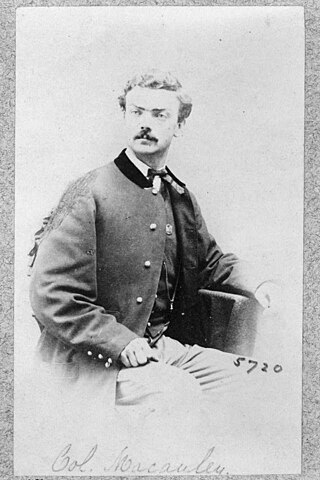
Daniel McCauley (1839–1894) was an American politician and Union Army office during the American Civil War.
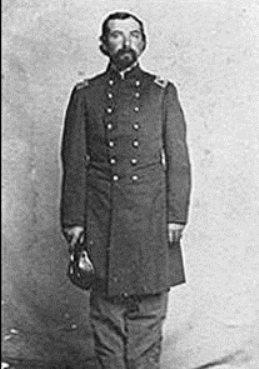
Frederick Knefler served in the Union Army in the U.S. Civil War, joining as a first lieutenant in May 1861. He served as a staff officer and as colonel of the 79th Indiana Infantry Regiment and an acting brigade commander. In 1866, he was nominated and confirmed for appointment to the grade of brevet brigadier general of volunteers, to rank from March 13, 1865. His daughter married Edward Taussig and he was the grandfather of Joseph Taussig, the great-grandfather of Joseph K. Taussig Jr. and great-great-grandfather of Captain Joseph K. Taussig III USMC.
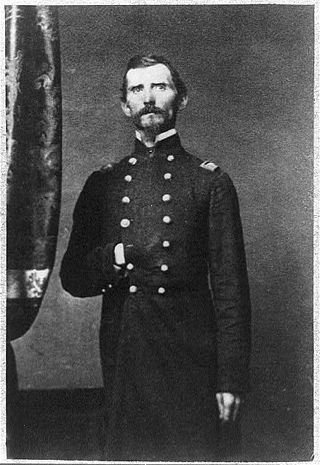
George Francis McGinnis was a volunteer soldier during the Mexican–American War and a Union General during the American Civil War.
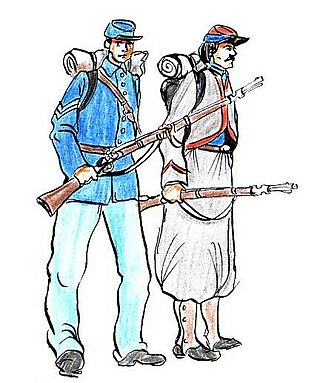
The 11th Indiana Zouaves was an infantry regiment that served in the Union Army during the American Civil War.
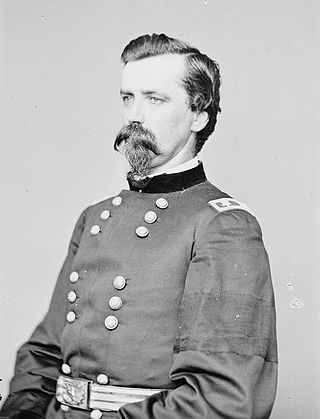
Robert Sanford Foster was an American officer. He served as a Union general during the American Civil War. He played a prominent role in the Siege of Petersburg and the Appomattox Campaign.
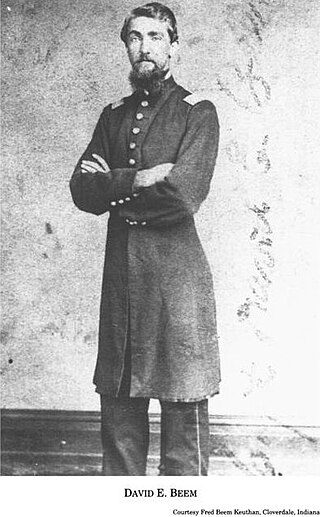
David Enoch Beem was a prominent lawyer, banker, and American Civil War veteran from Spencer, Owen County, Indiana. Beem, who attained the rank of captain of Company H, 14th Indiana Infantry Regiment, fought in numerous battles in the eastern United States before he mustered out of the Union army in June 1864. After the war Beem resumed his law practice in Spencer and became involved in local banking ventures. He was also active the state's Republican Party and civic affairs. Beem, a graduate of Indiana University, class of 1860, served on Purdue University's board of trustees for eighteen years. He also participated in the Grand Army of the Republic at local and state levels. Beem's papers and letters are preserved in the collections of the Indiana Historical Society in Indianapolis. The David Enoch Beem House, his former residence in Spencer, is listed on the National Register of Historic Places.
References
Griffin, T. K. 1992. The 1st Irish, 35th Indiana Volunteer Infantry Regiment, 1861-1865 : a military, political and social history. Thesis, Butler University, Indianapolis, Indiana.


